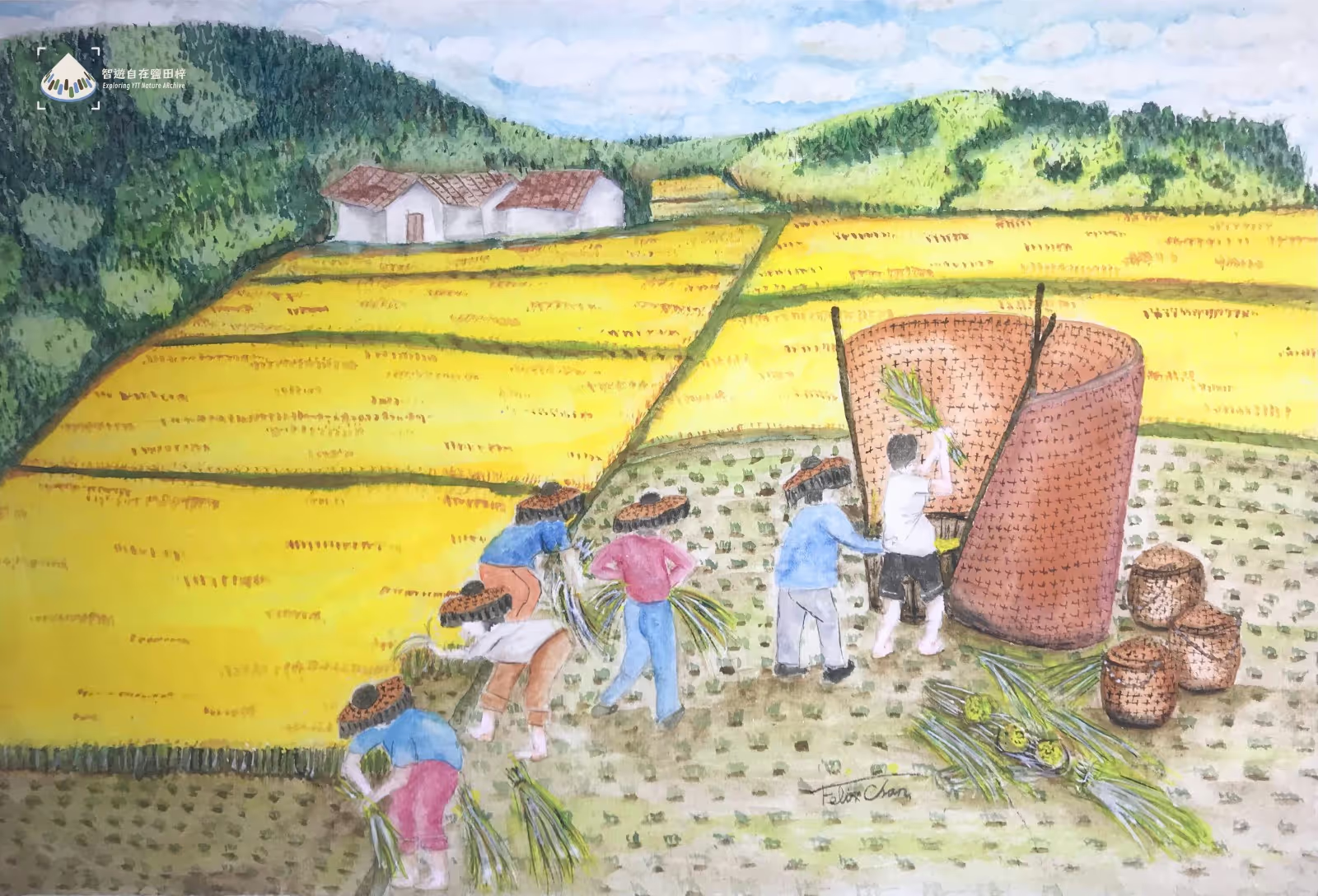
The significance of Camphor Tree
Belonging to the Lauraceae family, Camphor is a Hong Kong native evergreen tree. The flowering period is usually from April to May, when the tree is covered with small greenish white to yellowish green flowers. When you walk close to the trees, you will smell a unique fragrance.
Camphor trees have many uses and provide diverse ecosystem services. For example, the camphor and camphor oil refined from the trunk and leaves of camphor trees could be used for insect repellent, medicine, and fragrance etc. [1] The timber is resistant to decay and insects, so it could be made into furniture and boats etc. [1]. Camphor trees also provide habitats and food for birds and butterflies [1]. The larvae of the Common Bluebottle (𝘎𝘳𝘢𝘱𝘩𝘪𝘶𝘮 𝘴𝘢𝘳𝘱𝘦𝘥𝘰𝘯) and Tawny Rajah (𝘊𝘩𝘢𝘳𝘢𝘹𝘦𝘴 𝘣𝘦𝘳𝘯𝘢𝘳𝘥𝘶𝘴) feed on camphor tree leaves.
In Yim Tin Tsai village, camphor trees have historical and cultural significance. According to Hakka tradition, in the past, whenever a baby girl was born, the family would plant a camphor tree in front of their house. The growth of the camphor tree reflects the girl's growth. When the woman got married, her family would harvest the camphor trees and make camphor chest as a dowry [2].
The camphor trees grow tall with broad crown. Towering in the village, they have become ‘landmarks’. A villager who moved to the urban when he was young recalled that his grandma used to sit under the big camphor tree near the pier waiting for him to return to the island for summer vacation (Full story: https://www.yttstorytelling.org/en/storymap#49).
After landing on the island, go up along the path on the right and you will see the old camphor tree outside the village community office. As a villager shared, during the Japanese occupation, the Japanese army demanded to cut down the camphor tree to widen the road. Fortunately, the then village chief fought them off to protect this Feng Shui tree and thus avoided the crisis (Full story: https://www.yttstorytelling.org/en/storymap#41; https://www.youtube.com/watch?v=7FBitFqgw1Q&ab_channel=%E9%B9%BD%E7%94%B0.%E3%80%8C%E6%95%85%E3%80%8D%E4%BB%94YimTinTsaiStorytelling).
Now, if you look in the tree hole, you will find that the interior of the trunk is hollowed, but if you look up at the crown of the tree, you will still see lush branches and leaves growing.
Let's meet this interesting plant friend when you visit the Island!
Reference
- Greening, Landscape & Tree Management Section, Development Bureau (2023). Tree Labels with QR Codes - Camphor Tree. https://www.greening.gov.hk/en/community-outreach/qrcode-tree-labels/index_id_12.html
- Leisure and Cultural Services Department (2015). Food Plants for Butterfly Larvae. https://www.lcsd.gov.hk/en/green/butterfly/food_plants.html
- Salt and Light Preservation Centre. Century-old Camphorwood (Cinnamomum Camphora). https://yimtintsai.com/century-old-camphorwood-cinnamomum-camphora/





